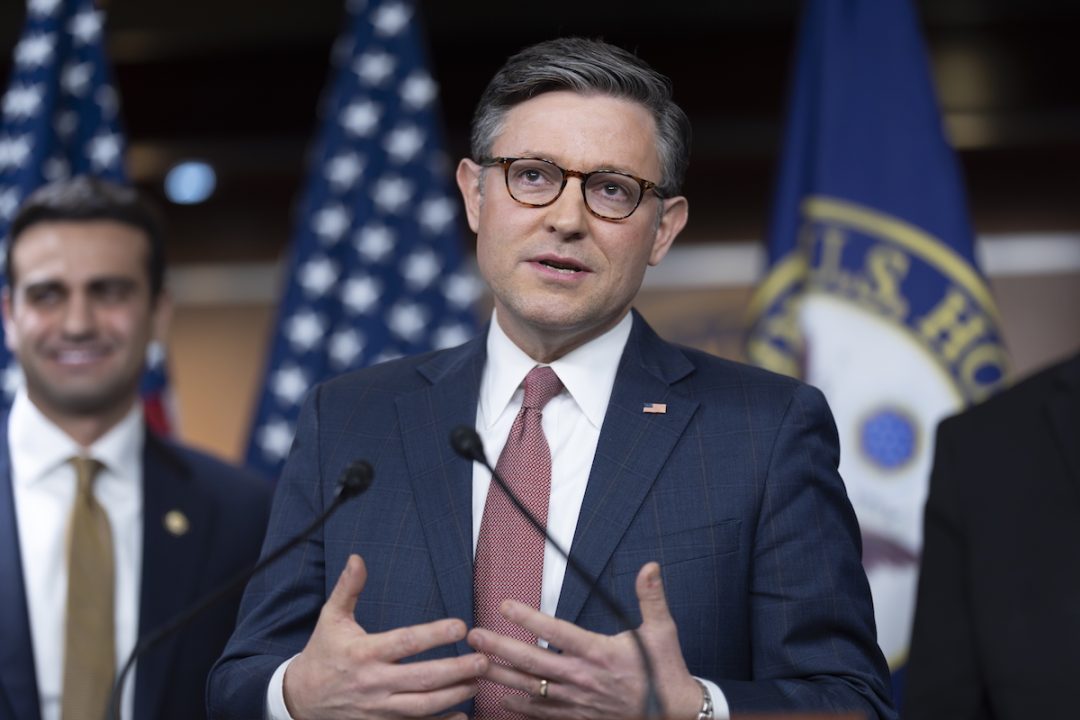
In yet another escalation of America’s already colossal $850 billion defense budget, House Republicans have introduced a resolution to increase military spending by an additional $100 billion. Framed as a key component of President Donald Trump’s broader fiscal package, which also includes tax cuts and a $4 trillion debt-ceiling increase, the proposal reinforces Washington’s relentless prioritization of military expansion — even as the national debt soars and domestic priorities struggle for attention.
The Hike
As Breaking Defense reports, the proposed increase follows a familiar pattern — military budgets balloon every year with zero scrutiny, and even Congress doesn’t know where the money is going. In other words, the Pentagon might be getting another massive funding boost without a single detailed breakdown of how it will be spent. The House and Senate Armed Services Committees will decide later — assuming the bill even gets that far before rubber-stamping more war funding.
House Speaker Mike Johnson (R-La.) implied that the move is intended to fulfill Trump’s “full agenda.” He also maintained that this is a well-considered effort by House Republicans to deliver on campaign promises.
However, this “full agenda” seems to prioritize unchecked military expansion above all else. The United States already spends more on defense than the next 10 largest militaries combined, yet the push for ever-greater funding continues without scrutiny or restraint. The problem isn’t just inefficiency or mismanagement — it’s the sheer magnitude of military spending itself. With each budget cycle, the Pentagon’s share of federal resources swells, reinforcing a system where military power dominates national policy, regardless of necessity, strategy, or long-term consequences.
The Congressional Budget Office (CBO) projects that military spending will rise by 10 percent between 2028 and 2038. However, this expansion could be fast-tracked through ambitious initiatives such as the proposed Iron Dome-style missile defense system, among other “modernization” initiatives.
The Senate’s Push for Even Greater Spending
The Senate’s proposal seeks to increase defense spending by $150 billion, which is $50 billion more than the House’s proposed increase. Breaking Defense explains that while the House aims to pass its priorities in a single sweeping bill — bundling defense increases with tax cuts, spending reductions, and a $4 trillion debt-ceiling increase — the Senate has opted for a piecemeal approach, advancing funding for defense, border security, and energy in separate legislative packages.
Senate Budget Committee Chairman Lindsey Graham (R-S.C.) has urged House Republicans to support the Senate’s higher spending levels, arguing, “The problem we have now is that ICE is running out of money.” However, this rationale highlights a deeper issue — the assumption that pouring even more money into security agencies and defense contractors automatically translates to national strength.
Democrats, meanwhile, have largely accepted the increases in defense spending but object to the budget-reconciliation process being used to fast-track the legislation. Reconciliation allows certain budget-related bills to pass with a simple majority in the Senate, bypassing the filibuster, which typically requires 60 votes for most legislation. This maneuver makes it easier for Republicans to push through Trump’s agenda without needing Democratic support.
Senator Tim Kaine (D-Va.) pushed back, questioning why reconciliation was necessary for additional military funding. he argued that Congress had already agreed — twice last year, with bipartisan support — to increase the defense budget. Therefore, Kaine’s stance reflects a procedural disagreement rather than substantive opposition to more military spending, underscoring that both parties ultimately agree on increasing the military budget despite their public posturing.
Trump’s War Machine
In a recent interview with Fox News, President Trump emphasized his focus on eliminating waste in the defense budget. Nonetheless, he explicitly stated that he wanted to “increase defense spending.” Therefore, while framed as a cost-cutting initiative, his administration is not looking to spend less on war — it’s focused on making war more “efficient.”
As The New American reported on Wednesday, Secretary of Defense Pete Hegseth is teaming up with Elon Musk’s Department of Government Efficiency (DOGE) to optimize Pentagon spending. However, rather than cutting expenditures, the initiative seeks to redirect savings toward acquiring more weapons systems and accelerating the pace of military procurement.
NATO
Trump’s administration has also committed to maintaining defense spending above three percent of Gross Domestic Product (GDP). It also has pushed for NATO allies to increase their own military budgets to five percent of GDP.
However, NATO’s role itself remains a point of contention. While Trump has frequently criticized NATO members for not contributing enough, the broader issue is the alliance’s fundamental purpose. The U.S. Constitution does not authorize entangling military alliances. And in practice, NATO has served less as a defensive pact and more as a vehicle for global interventionism. Instead of safeguarding peace, NATO has facilitated decades of endless war, drawing the United States into foreign conflicts that have little to do with actual national defense.
The Cost of Militarism
Beyond the budget figures lies a deeper problem: The United States continues to rely on military power as its primary tool of global influence. With more than 750 military bases spanning 80 countries, Washington remains committed to interventionism, ensuring defense spending never slows — even as Americans face economic hardship.
Furthermore, while Trump has paused most foreign aid, his continued support for Ukraine and Israel signals that, despite his rhetoric on reducing overseas spending, the United States remains fully invested in military engagements. Likewise, the latest budget proposals seem less about national security and more about sustaining a system that benefits military contractors, lobbyists, and politicians eager to appear “strong” on defense.
Critics of U.S. foreign policy, including former Congressman Ron Paul, have long warned that reckless money printing fuels relentless military spending. This enables endless interventions that drive inflation, weaken the dollar, and burden taxpayers. Rather than exercising fiscal restraint, the government funds its wars through debt, passing the cost to future generations.
Economic Model
The proposed defense hike underscores that militarization is no longer just policy — it’s an economic model. The defense industry thrives on perpetual war, funneling taxpayer dollars into massive contracts while everyday Americans pay the price through rising inflation, higher interest rates, and declining real wages.
As Breaking Defense reports, Senator Tom Kennedy (R-La.) dismissed concerns about ballooning military budgets, declaring, “Weakness invites the wolves. We have to spend more money on defense.” But military supremacy does not guarantee security. At what point does endless war preparation, paired with proxy wars, come at the expense of real strategic thinking? How much longer can the government justify printing money to sustain an empire abroad while bankrupting its own citizens at home?





